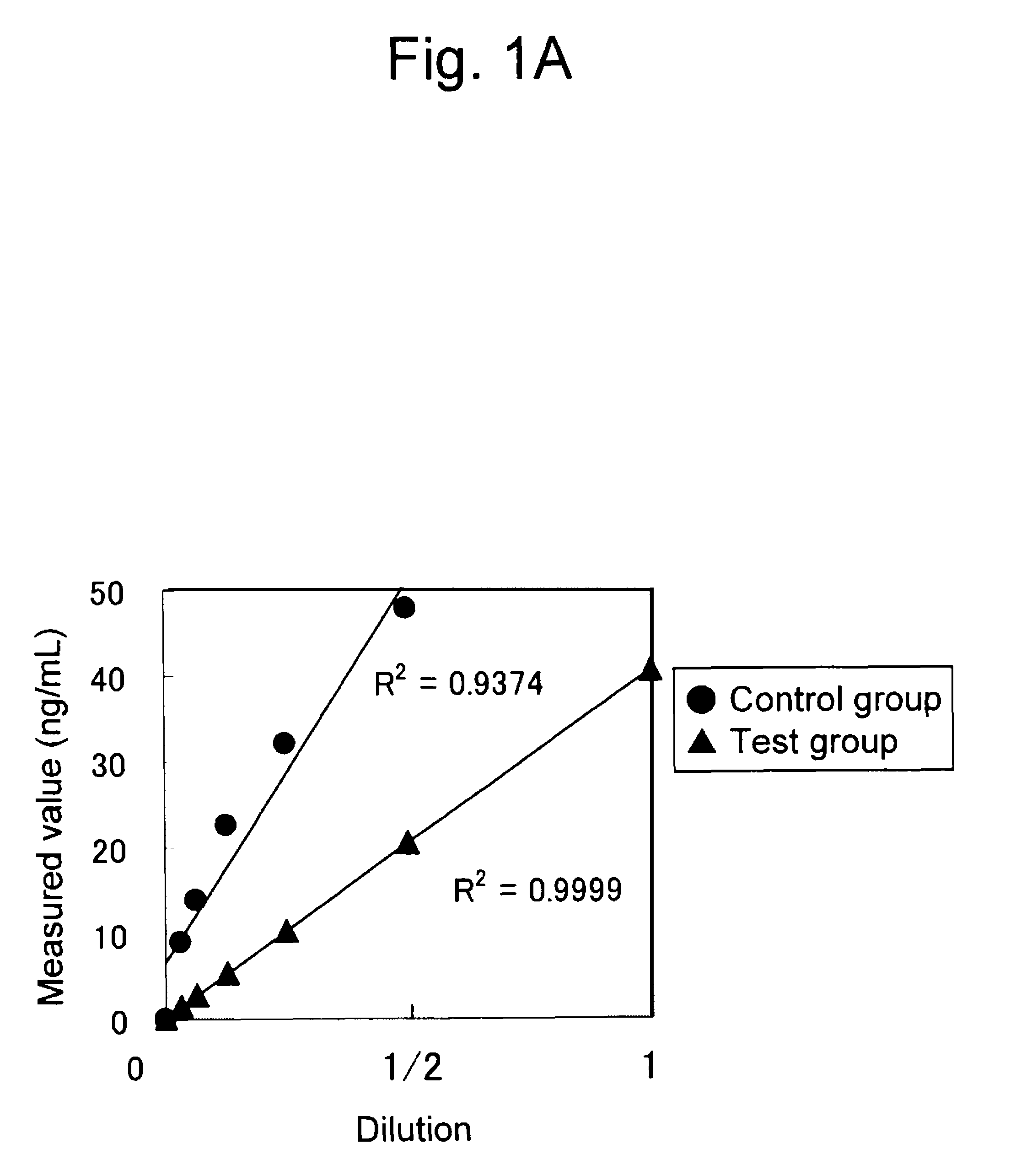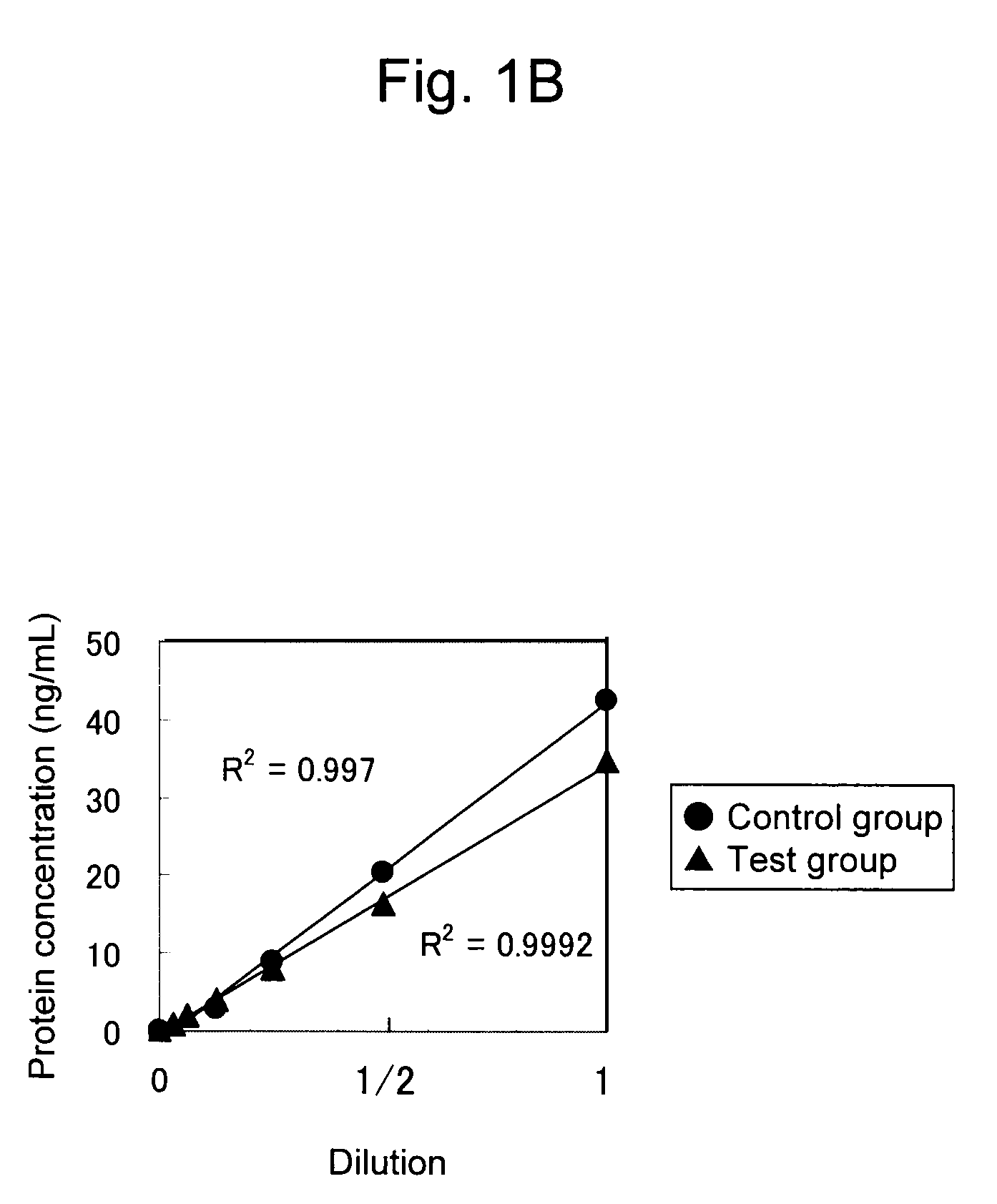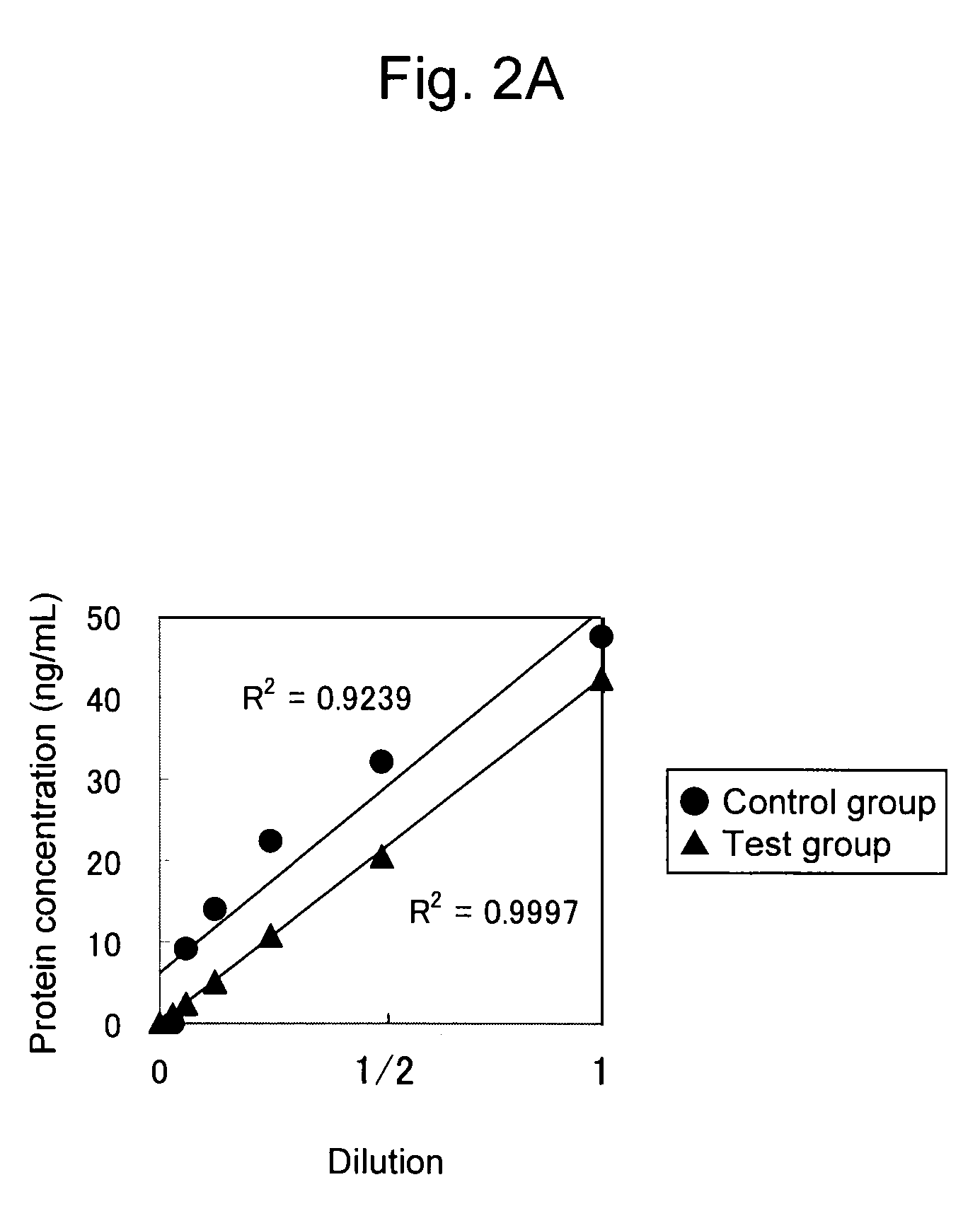Highly sensitive method for detecting protein in food
a high-sensitivity, protein-detecting technology, applied in the field of specific protein-detecting methods, can solve the problems of difficult appropriate detection, difficult measurement, and difficulty in appropriate detection of targets
- Summary
- Abstract
- Description
- Claims
- Application Information
AI Technical Summary
Benefits of technology
Problems solved by technology
Method used
Image
Examples
example 1
Preparation of Model Processed Food and of ELISA Calibration Standard Solution
(1) Preparation of Model Processed Food
[0061]Various model processed food specimens containing black tiger prawn muscle were prepared by the following method.
(i) Fish Sausage
[0062]Minced fish flesh, which is a major raw material for fish sausage, was homogenized using a food cutter and then a flavoring material such as common salt was added. To 3 kg of the raw material, 44 mg or 220 mg of freeze-dried powder of black tiger prawn muscle was added. The mixture was stirred well, covered by fish sausage casings, and then heated for 15 minutes at 121° C.
(ii) Freeze-Dried Egg Soup (FD Egg Soup)
[0063]Egg (224 g) was added to a solution prepared by adding 11.2 g of potato starch dissolved in 10 g of water to 502 g of water heated at 95° C. Then the solution was kept at 95° C. To 864 g of a flavoring material solution to which salt had been added, 6 mg or 30 mg of freeze-dried powder of black tiger prawn muscle was...
example 2
Measurement Using Sample Dilution Buffer to which Minced Fish Fresh Extract (Containing Muscle Tissue Protein) was Added
(1) Preparation of Sample Dilution Buffer (Minced Fish Fresh)
[0069]The minced fish flesh of Alaska Pollack (Maruha Nichiro Foods, Inc.) was homogenized using a mortar. A 1 g portion of the sample was extracted using 19 mL of the extraction solution. The mixture was shaken overnight (17 hours) at room temperature. After extraction, the extract was centrifuged at 3,000×g for 20 minutes and then the supernatant was filtered using filter paper to prepare a stock solution of the minced fish fresh extract. To this stock solution, an equivalent volume of extraction reagent for specified ingredient was added. The solution was diluted 20-fold using assay solution (1% BSA / 0.05% Tween20 / 0.05% Proclin 200 (Supelco, Cat. No. 500380) / 20 mM TBS, pH7.4) to prepare sample dilution buffer (minced fish fresh).
(2) Measurement Using Solution for Addition and Dilution of Minced Fish Fre...
example 3
Test 1 Addition of the Extract of Minced Fish Fresh Dry Powder (Probine)
(1) Preparation of Sample Dilution Buffer (Probine) 1
[0081]A 0.2 g portion of Probine (freeze dried powder of Alaska Pollack minced fish fresh: Maruha Nichiro Foods, Inc.) was extracted using 19.8 mL of extraction reagent for specified ingredient. The mixture was shaken overnight (17 hours) at room temperature. After extraction, the extract was centrifuged at 3,000×g for 20 minutes and then the supernatant was filtered using filter paper. The solution diluted 20-fold using assay solution (1% BSA / 0.05% Tween20 / 0.05% Proclin 200 (Supelco, Cat. No. 500380) / 20 mM TBS, pH7.4) so that sample dilution buffer (Probine) 1 was prepared.
(2) Measurement Using Solution for Addition and Dilution of Probine Extract
(i) Preparation of Calibration Standard Solution
[0082]The ELISA calibration standard solution prepared according to the method of Example 1 was diluted 3420-fold (1 μg / mL) using the stock solution of the Probine extr...
PUM
| Property | Measurement | Unit |
|---|---|---|
| temperature | aaaaa | aaaaa |
| temperature | aaaaa | aaaaa |
| weight | aaaaa | aaaaa |
Abstract
Description
Claims
Application Information
 Login to View More
Login to View More - R&D Engineer
- R&D Manager
- IP Professional
- Industry Leading Data Capabilities
- Powerful AI technology
- Patent DNA Extraction
Browse by: Latest US Patents, China's latest patents, Technical Efficacy Thesaurus, Application Domain, Technology Topic, Popular Technical Reports.
© 2024 PatSnap. All rights reserved.Legal|Privacy policy|Modern Slavery Act Transparency Statement|Sitemap|About US| Contact US: help@patsnap.com










